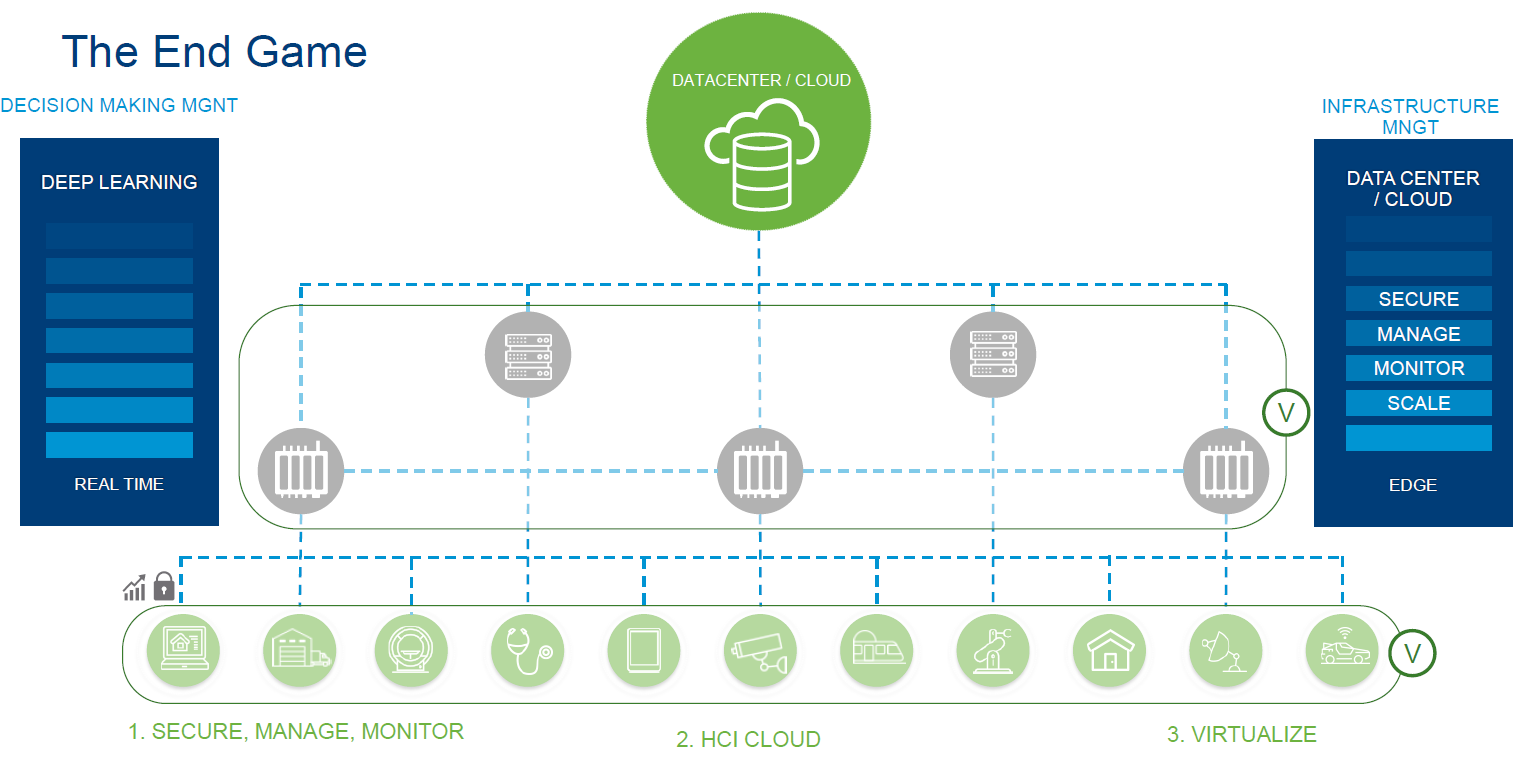
The rapid proliferation of connected devices and the huge amounts of data they are generating is forcing tech vendors and enterprises alike to cast their eyes to the network edge, which has become a focus of the distributed computing movement as more compute, storage, network, analytics and other resources are moving closer to where these devices live.
Compute is being embedded in everything, and this makes sense. The costs in time, due to latency issues, and money, due to budgetary issues, from transferring all that data from those distributed devices back to a private or public datacenter are too high to pay. Edge computing reducing costs and alleviates pressure on networks.
That is why technology suppliers are putting a greater emphasis on edge computing. Earlier this month, Intel earlier launched the latest generation of its Xeon D processors, the 2100 series, built on the “Skylake” architecture and aimed at edge and other constrained environments that are more sensitive to issues of density and power consumption. The Xeon D launched almost three years ago to address workloads that don’t need all the compute capabilities found in Intel’s more powerful mainline Xeon chips. For its part, Arm this month unveiled Project Trillium, an effort to drive machine learning, artificial intelligence and object-detection capabilities into edge devices through processors optimized to run such applications and software to leverage such neural network frameworks as Google’s TensorFlow, Caffe and Android. AMD this month rolled out two embedded processors that are based on the company’s Zen-based Epyc server and Ryzen hybrid CPU-GPU chips and aimed at the edge.
Systems OEMs also are extending their reach out to the edge, in large part through hyperconverged infrastructure offerings, which already were being aimed at distributed environments and offer tightly integrated compute, storage and networking resources as well as management software and other capabilities in a single solution that is designed to be easy to be dense, power- and cost-efficient, and easy to manage. (There’s not a lot of IT support at the edge.) For example, Cisco is putting more capabilities into its HyperFlex systems – which are based in part on the company’s Unified Computing Systems (UCS), Nexus network switches and software inherited when the vendor bought Springpath last year – to support multiple cloud and edge environments.
VMware is another company that is embracing edge computing, leveraging existing technologies such as its vSAN hyperconverged storage, which is of course built atop its ESXi hypervisor and its vSphere management stack. At the VMworld conference last summer, VMware rolled out its HCI Acceleration Kit, a three-node hyperconverged cluster that comes bundled with vSphere and vSAN, with the vSAN ReadyNodes being built by such hardware partners as Dell EMC, Fujitsu, Lenovo, NEC and Supermicro. At almost $7,900 per three-node cluster, VMware touted this bundle as an affordable way to bring enterprise-level infrastructure and management software to distributed environments, including the edge. This is a look at how VMware views the evolving compute environment:
VMware took another step in that direction at this week’s Mobile World Congress in Barcelona, Spain, introduced new distributed computing stacks that are aimed at specific edge use cases in such areas as remote industrial environments, manufacturing, and surveillance. The company also said it is working with the National Science Foundation (NSF) on a program to accelerate the design of edge computing infrastructure.
All of the edge stacks that VMware introduced will include vSAN, vSphere, and VMware’s Pulse IoT Center, which delivers management, monitoring, and security for edge systems and gateways as well as connected devices like sensors. The combination of hyperconverged infrastructure and Pulse IoT Center will deliver real-time analytics for edge environments, and enterprises will be able to use third-party analytics technologies from third parties, VMware says.
In addition, VMware is partnering with Axis Communications, which makes IP video surveillance products, to develop a smart surveillance edge solution that initially will run on Dell PowerEdge servers as well as Dell Edge Gateways, and will include the VMware software. Another partnership with IT and services company Wipro is focused on creating solutions for manufacturers that will leverage Wipro’s Looking Glass asset management platform and services. According to VMware, the offerings will improve the productivity of machines and other systems in a manufacturer’s environment.
VMware didn’t have much more information to share about the edge stacks that were talked about at MWC, including pricing.
The partnership with the NSF is aimed at driving research around edge infrastructures and end-to-end networked systems architectures. VMware is putting up $2 million for two awards that will go to faculty members at U.S. universities with NSF adding $4 million. The solicitation for proposals outlines the changing nature of computing that is being driven by the growing numbers of connected systems and devices and the data they are creating.
“A key shift is from edge devices consuming data produced in the cloud to edge devices being a voluminous producer of data,” VMware and NSF say in the solicitation. “This shift reopens a broad variety of system-level research questions concerning data placement, movement, processing and sharing. Importantly, the shift also opens the door to compelling new applications with significant industrial and societal impact in domains such as healthcare, manufacturing, transportation, public safety, energy, buildings, and telecommunications.”
The two organizations say that the “central challenge is to design and develop data-centric edge architectures, programming paradigms, runtime environments, and data sharing frameworks that will enable compelling new applications and fully realize the opportunity of big data in tomorrow’s mobile and IoT device environments,” and stress the need to view edge computing in terms of the multiple stakeholders involved and to make security and privacy a “first order design and operational considerations.”
The deadline for submissions is May 22.






Be the first to comment